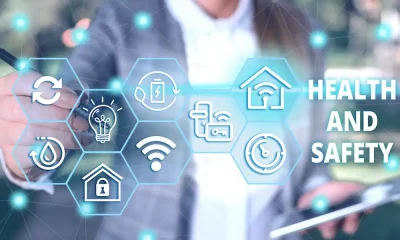Technology
A Short History Of The Fax Machine And Why It’s Still a Norm

Fax machines have been in use since the 1980’s, but the technology dates back to the 1800’s. Scottish inventor Alexander Bain received the first British patent for an Electric Printing Telegraph in 1846 for s device that he had created to reproduce visual signs.
The facsimile machine was modified and upgraded several times. As that century drew to a close, people were able to send pictures, signatures and images to each other via wire. By the 1940’s, the technology had improved to the point where documents were able to be transmitted wirelessly. The technology continued to evolve so that fax machines shrunk from being large, heavy and cumbersome machines taking up a lot of space to models that could conveniently fit on a desktop. Although the idea was good, the machines themselves were bulky and hard to operate for most users.
In the 1960’s, fax machines were introduced that could send correspondence through telephone lines. A document could be sent across the room or across the continent in just a few minutes. This also led to the development of some hybrid machines that were able to scan, copy and fax pages. Computer interface was added in the 1980’s with the advent of personal computers, and the convenience and ease of sending documents via fax gained popularity in companies around the globe.
The dawn of the internet and email saw the popularity and necessity of faxes fade. When companies saw how easy it was to email documents and receive them instantaneously, many of them embraced the convenience. It also freed up more of their phone lines that were originally dedicated to incoming and outgoing facsimile transmissions. While there were still copiers that offered both fax and email options, freestanding fax machines began to dwindle in modern offices.
The fax machine is not dead, however. Here are a few reasons why faxes are still in use:
- It’s familiar technology. Faxes are something that a lot of workers, especially older generations are still comfortable with. While some people adapt to change quickly, others still prefer to do things the “old-fashioned way.” This includes using electric typewriters, hand-written memos and faxing.
- Customers are still using fax machines. As businesses add customers, they also have to serve their established customers, which means sending and receiving faxes for orders, deliveries, and so on.
- Fax machines give a sense of security. There are still some skeptics who aren’t convinced that emails are as secure as others insist that they are, no matter how much encryption or firewall protection a company may have. Some use fax machines because they provide a paper trail, which is handy for monitoring transaction history and can be used as evidence in court trials that require call logs and records. Government and healthcare standards still allow and encourage faxing documents for security reasons.
- Faxing has gone digital. Faxes can now be sent online. No more need to tie up an expensive phone line! There are companies like efax and faxburner that allow you to send, store and receive faxes on your computer or cell phone. This saves a lot of time and resources for executives who are always on the go.
While the technology and term “fax machine” may seem antiquated and outdated to some, the fax machine is not going away any time soon. In fact, some studies have shown that fax use has actually increased in the last few years. The fax machine is certain to be reliable, efficient technology for generations to come as it continues to evolve.






